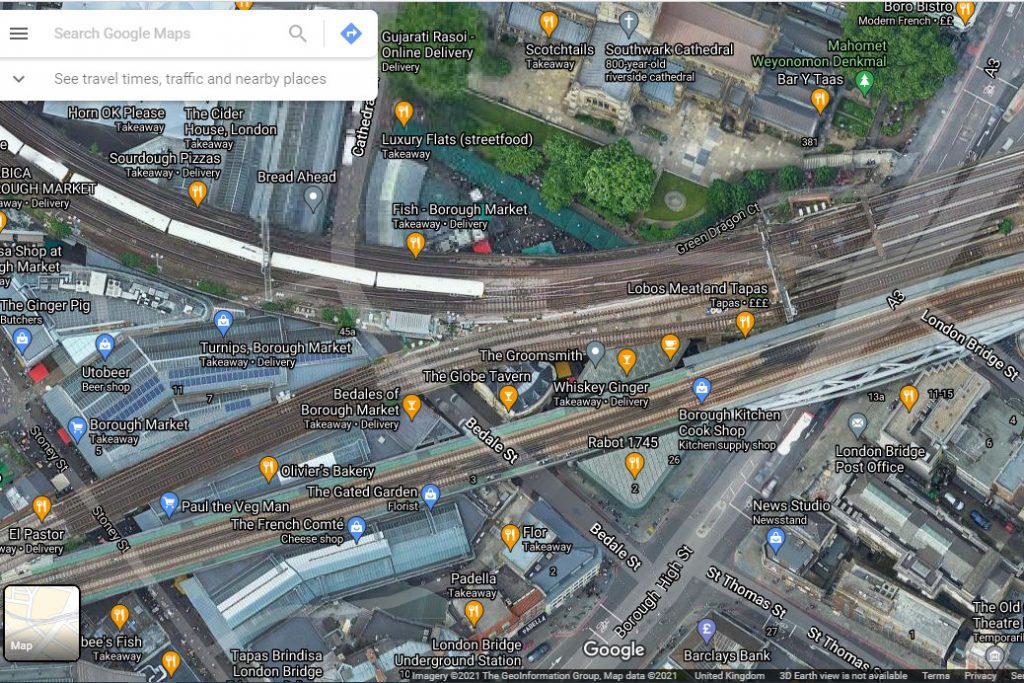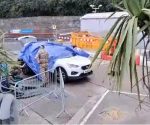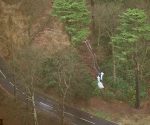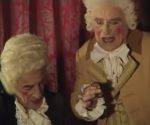Night of the Krypteia: perhaps the clearest case of a false flag attack, ever
Coming along and to arrive imminently (this week†) is a new and long overdue chapter in the series/book, hosted at frombehindenemylines.co.uk, on the 2019 inquests into the deaths that happened in the London Bridge and Borough Market so-called terror incident of 2017.
The work, over its lifetime, has involved constructing an understanding of the incident, from witness statement entered into the record at the Inquests and from reactions to evidence, and management of it, by the Inquests’ legal personnel – the people who are always contriving an outcome in such situations that does not reflect the truth that should be arrived at. Although the task is probably not even half-way to completion, the comprehension of it has produced a picture quite devastating to the official narrative, and so abundant in demonstration, that it can be said that the London Bridge and Borough Market incident is the Islamic terror event, occurring in the English-speaking world in the 21st century, most easiest to discern as a false flag attack.

Boro Bistro is in the top right hand corner. The stone steps down into Green Dragon Court can be seen a little bit further south. The underground station exit/entrance is at the bottom of the image. Borough Market is encircled by Bedale Street and Stoney Street, and there’s access to each through the covered complex. There is also an entrance by the steps to the underground. Officially, the culprits left Boro Bistro and Green Dragon Court by the stone steps, down under the railway bridge on Borough High Street, on to the small section of Southwark Street (not shown) that forms a junction with the High Street, before turning on to Stoney Street. In reality, the area is a maze of backstreets from Green Dragon Court to Stoney Street, and teams could have been deployed and redeployed from one area to another quite easily taking advantage of the pandemonium.
From the transcripts of the Inquests, it is supremely clear to see that teams of knife-wielding men carried out attacks separate from each other in distinct zones of operation, with one team in particular – that comprising of “Khuram Butt”, “Rachid Redouane”, and “Youseef Zaghba” – moving from one zone to another (with attacks taking place just ahead of their movement) to create scope for a unified narrative. This official threesome would not just saunter from one area to another to create the optics of one terror attack, they would also join in the attacking using knives that they also carried. Ultimately, they would be blamed for the deaths of James McMullan, Alexandre Pigeard, Kirsty Boden, Sébastien Bélanger, Sara Zelenak and Ignacio Echeverria Miralles de Imperial, and injuries caused to twenty-two people, not counting some police who came across them and got involved, during the Borough Market phase of the incident (there had been death and injury when the van supposedly bringing the trio to the scene careered across London Bridge). This was all in a 9 to 10 minutes window, covering a distance of roughly 520 yards, or 0.3 miles, taking in the alfresco area of the Boro Bistro restaurant, moving under the railway bridge down Borough High Street, and then going up and down Stoney Street, and it’s before the official culprits were extrajudicially killed by police, and thus dealt with so that these three agents wouldn’t have to live out prison terms in the names of the personas who had been held responsible – or, these three decoys wouldn’t be able to tell any tales.
In the last phase of the incident, the three men took to entering restaurants in Stoney Street, and attacking people therein, and it is because there was so much range in the attack, rather than it being just a matter of covering a third of a mile in ten minutes (which could be done at a comfortable walking pace), in such a short space of time that is why there should be immediate scepticism about the extent of the feats of Butt, Redouance and Zaghba. It’s also not as easy as deciding if a killing-per-minute rate is feasible, because it’s not simply that two men would each have had to stab nine people, with the third needing to stab ten. Most of the knife attacks were carried out simultaneously by two or three of the assailants, and the duration of each attack varied. But, if all attacks on non-police persons were done as a pack, there would have to be an attack every 21 seconds on average – which is implausible. This is not even factoring in how a Transport Policeman battled three men to a standstill under the rail bridge which passes over Borough High Street and gave one of them such a good beating that it’s a mystery how he carried on, if he was one of the official three, to attack twelve more people, and then look so unfazed in the CCTV footage released to corporate-media (Mi7) showing them going to that juncture in the course of events where they would be “killed”.
But this feeling of impossibility from a sheer logistical point of view is not all there is to rely on to expose this incident for what it was. Even at the beginning, when three men were supposed to have jumped from a van that crashed into railings on street-level above the sunken Greed Dragon Court and the Boro Bistro within, testimony at the Inquests proved to not be able to tie such a fundamental detail down. In fact, it seemed more likely that only one man, presumably the driver, fled the vehicle.
The crash, it seems, was a sign for a team of men who could access Green Dragon Court quickly, nicknamed in the series as the “man who dropped in from above” and the “running men”, to begin killing. This is clearly evident from the account of two men, who had just come from the stone steps down from the street into the sunken area when the crash occurred, who found signs of an attack – indeed a dying victim – as they progressed into the killing zone. Crucially, their friend who had been with them in the sub-level area, after seeing the crash, decided to go in the opposite direction to them, and back up the steps, where he encountered men with knives. Bélanger, for this was the man who was stabbed to death, proved to be a blockage in a bottleneck for these men – who might not even have been the official three – as he tried to fend off blows aimed at him.
Meanwhile, down in the court, plenty of witnesses saw an attacker killing Pigeard very soon after the crash. This was the man who dropped in from above (because this was how a French newspaper, quoting the mother of a witness, reported the manner by which this man had appeared to have appeared in the courtyard). Mauro Galluzzo said he was wearing a grey T-shirt. The two running men, on the other hand, seem to have bumped past people down the steps before there was a panic – sometime between the van crashing and Bélanger returning from where he had come – and one witness, Helen Kennett, even saw them arrive as Piegard was being murdered. These running men, one in a bright top, and another in a top lighter than that, so said Galluzzo, were seen standing over a man they might have chased down.
Although the evidence is poor to conform that the three official attackers ever arrived in Green Dragon Court, it is reckoned they were present because some CCTV footage from inside the Boro Bistro was supposed to have caught them – although this footage was admitted as being “obscure” by the lawyers driving the Inquests – and also someone filmed them on a phone from the street above – although police had to enhance this footage because it was too dark otherwise. The truth of the matter is that one is left with an impression that there is no visibility of the three men at this stage of the incident like there is when they would come to Stoney Street, and there is a marked difference between the two settings in terms of the results of the attack – no one was killed on the Stoney Street side of the railway bridge. It suggests that while the three official culprits were in attendance at Boro Bistro to stick their knives into dying bodies and women who couldn’t get away in time, the vanguard of the attacking was done by people who could kill efficiently – and, of course, who dressed differently.
Officially, Khuram Butt was wearing a dark Arsenal football club jersey, under a red hooded top, and three quarter-length camouflage trousers. Rachid Redouane was wearing a navy, red and white striped top, with light blue jeans and white trainers. Youssef Zaghba was wearing a black, zipped, hooded top and black trousers. Altogether, it’s hard to make sense of this combination of clothing in relation with the descriptions of the team of attackers who had instantly been inside Green Dragon Court. Moreover, the policeman who fought the three men under the rail bridge told of one in a grey tracksuit, top and bottoms, and another in a brown top.
This latter group of men most likely arrived from south of the bridge – i.e. the Borough Market and Stoney Street side. It means they wouldn’t have moved southwards from Boro Bistro. That this appears to be the case is due to how the cue for the Transport Policeman to get involved was the attack on Marie Bondeville under the bridge. At this point of time, he was looking at an injured man, situated to the south [on the pavement in front of the building on the corner with Bedale Street], who had already been attacked. This inconvenient truth was whitewashed over at the Inquests with the concoction of a tall tale about a man who had been stabbed north of the bridge and who had staggered down to this place to collapse. It was such an act of desperation that involved recasting what witnesses said was a person of colour into a white man (who would appear in Mi7’s newspapers to tell his story). Anyway, someone at this scene told the Transport Policeman that the attackers had gone north. Moreover, the testimony of Bondeville and her boyfriend Oliver Dowling gives every reason to suppose that the attackers had indeed come from the south.
In fact, even before the fight under the bridge, it seems, two or three men came out of the Borough Market (or a street adjacent to it, Bedale Street) and attacked a married couple on the Borough High Street, by the rails where the steps from the underground train station emerge onto the street. It was in this area where another man was attacked even while he was looking north to watch the supposed official terrorists scrapping with police under the bridge. But then, in fact, there isn’t even a straight story about this element, because its seems that at the same time that the Transport Policeman was fighting and containing the perpetrators ahead of their fleeing the scene, there was a ganging up by the perpetrators on the murder victim Ignacio Echeverria, also prior to fleeing the scene. These things couldn’t have happened at the same time if the official three were the only perpetrators involved.
Finally, as far as the incident will be covered when the new piece is published, it’s quite possible that a team of attackers withdrew back down into Borough Market via that aforesaid adjacent road – Bedale Street – (instead of going down Borough High Street to Stoney Street), because of how a witness said he saw an attack taking place there. This was dangerous stuff that the witness in question was not allowed to fully explain because it implied an attack in a place that wasn’t on the official route of the official attackers. The Queen’s Counsel interrogating this witness told him to forget about it.
Indeed, so simple is it to see the cover-up by this exact sort of unsound and (on the face of it) counter-productive reaction by the legal personnel who were steering the Inquests that it is a wonder indeed that alternative media has not picked this subject apart, and that there has not been films and books by the usual suspects tearing the official narrative to threads. (In fact, because the false flag is so very obvious, and there is no room for no-planes-on-911 type theories for to dilute, discredit and confuse, would be the explicit reason why there is no interest).
That being said, the investigation into the Borough Market and London Bridge Inquests will continue at FBEL, and coming up in the more distant future will be scrutiny of evidence generated by the incident as it played out to its conclusion in Stoney Street, including trying to make sense of who was injured by police by being in the firing line (something that isn’t necessarily always an accident), and who wasn’t (Butt, Redouane, and Zaghba?). There will also be careful study to see if the transcripts tell of any accosting and capture of operatives from any of the other teams, which is something that other sources certainly suggest is a thing that happened. There will also be a look at the phenomenon that is sensed when reading the transcript of agent provocateurs appearing at drinking establishments ahead of the killing zone of the incident to spread alarm. There will also be a look into the apparent tactic of the Metropolitan Police clearing people from pubs into the streets so as to create a required backdrop of pandemonium – and maybe even potential victims. The hope with this entire exercise, and it’s not an unreasonable one to have no matter how difficult such an objective might be to achieve, is that when it becomes clear how such a very simple (despite the appearance of complexity) and quite easily performed false flag is executed, and increasing numbers of people know what to look out for so that they can sabotage or expose one even as it unfolds, then UK Government won’t be able to stage any future instances quite so effectively, if at all.
† Update, 29th April: The new chapter has been published into the area that requires second tier access. Earlier chapters have been shifted “downwards” so that chapters one to four are now available without subscription, and chapters five to eight can be viewed with standard subscription.


















